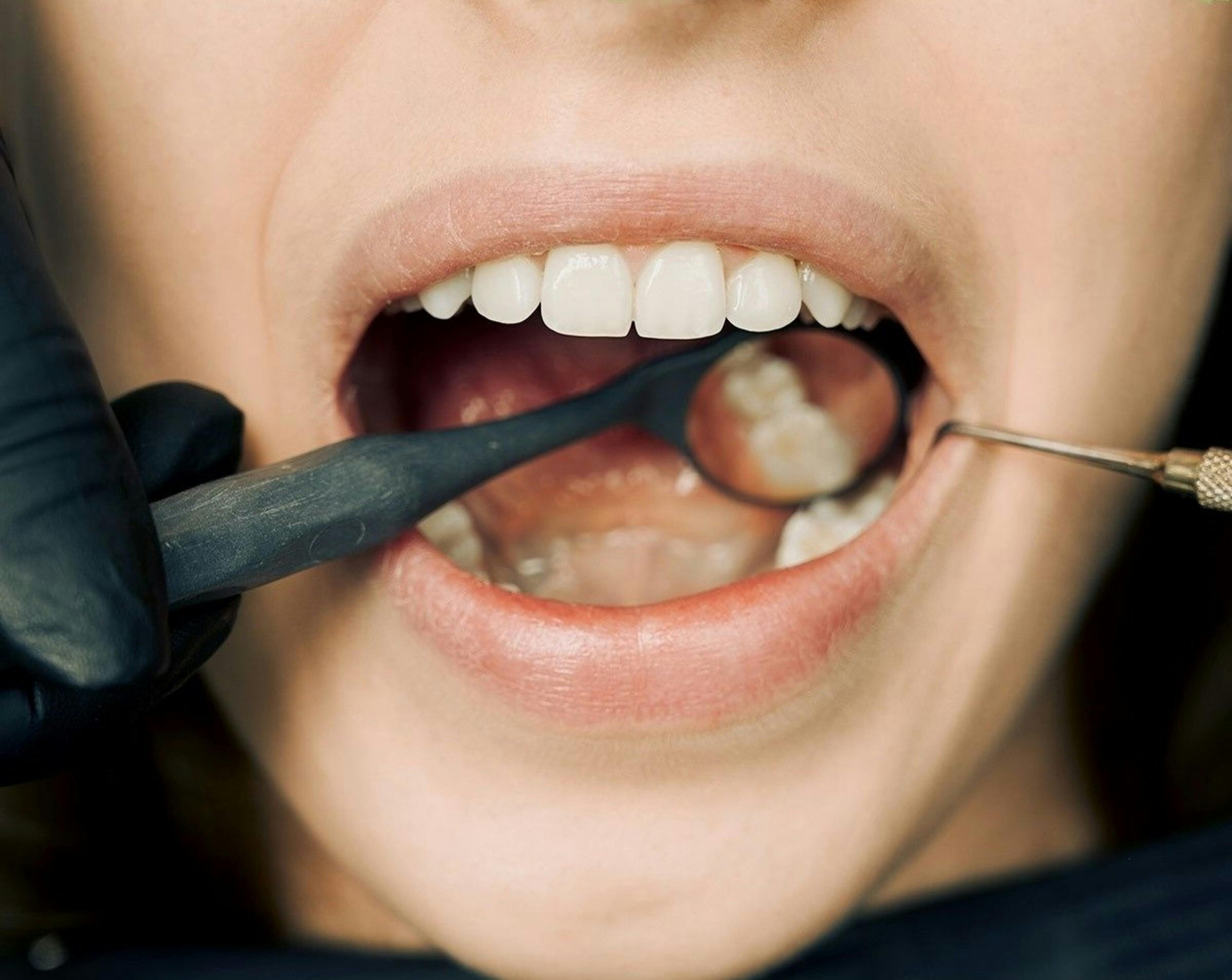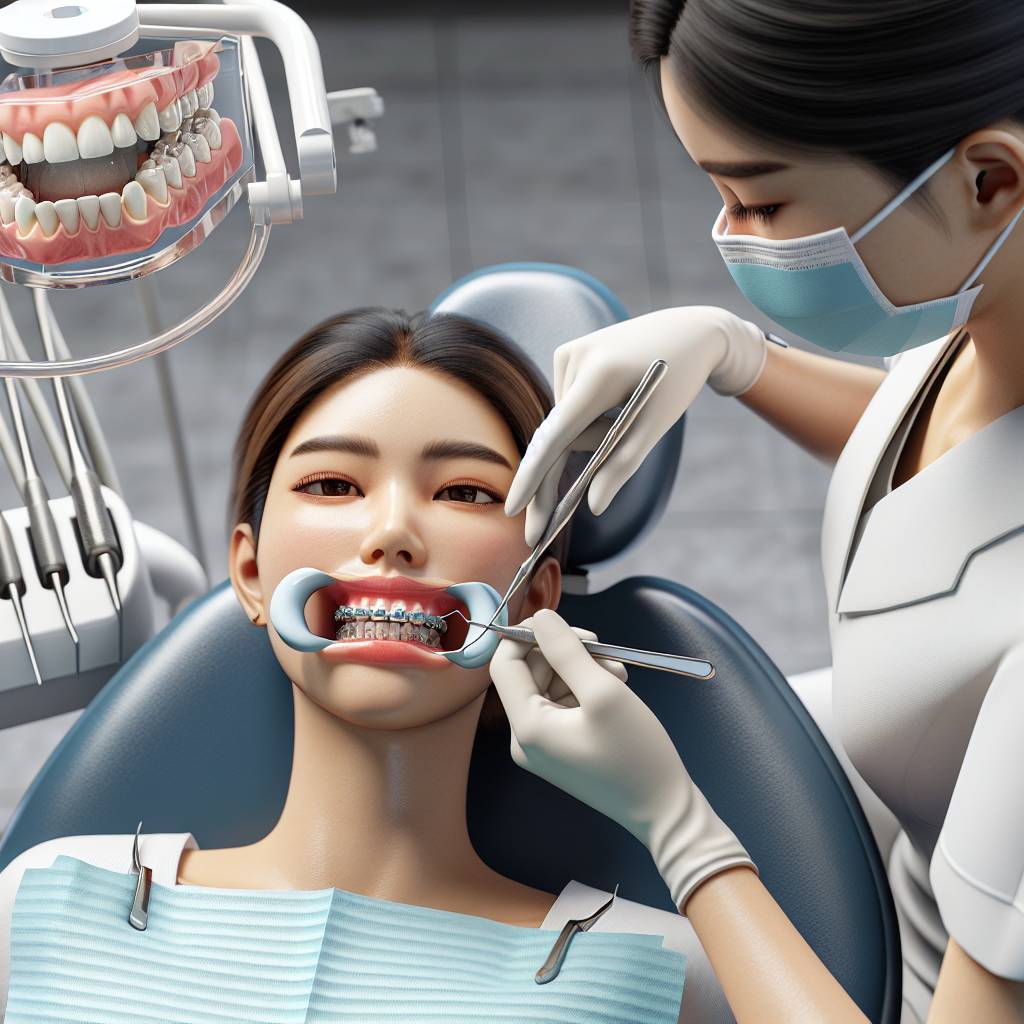Having gaps between your teeth can detract from your smile, but luckily there are a variety of ways that dentists can fix these gaps. Depending on the size and location of the gap, the dentist may use braces, veneers, bonding, or other methods to close the gap and give you a beautiful smile. In this article, we will discuss how dentists fix gaps between teeth and what treatments they might recommend for you.The options for gapping teeth depend on the size of the gap and the desired outcome. In some cases, dental bonding or porcelain veneers may be used to fill small gaps between teeth. For larger gaps, braces or clear aligners can be used to close the gap over time. In some cases, a dental bridge may be recommended if two adjacent teeth are missing and there is a large gap. Finally, dental implants may be suggested as an option for replacing missing teeth and closing any gaps caused by them.
Gaps Between Teeth
Gaps between teeth, also known as diastemas, can be caused by a number of different factors. These factors can range from genetics and improper oral hygiene, to extractions, misaligned teeth, or even certain habits such as thumb-sucking. In some cases, the gaps between the teeth can be caused by a combination of factors.
In terms of genetics, some people are simply born with the spacing between their teeth. This is known as an inherited trait and there is no definitive way to prevent it from happening. However, if proper oral hygiene is practiced from an early age, it may help maintain the spacing of the teeth and prevent it from becoming noticeable.
If extractions are necessary due to overcrowding or other dental issues, then the gaps between the teeth may be more noticeable after the procedure. This can happen because when a tooth is extracted, it creates space for other teeth to move around in which can result in gaps appearing.
If a person has misaligned or crooked teeth then this can also cause gaps between them. Crookedness or misalignment will cause some areas to be over crowded with tooth enamel while others have wide open spaces in between them.
Finally, certain habits such as thumb-sucking can cause gaps between teeth to appear over time. Thumb-sucking puts pressure on the front two top teeth which can push them apart and create a gap that wasn’t there before. It is important that young children break this habit early on in order to avoid this issue later on in life.
Closing Teeth Gaps
Dentists can close teeth gaps using a variety of techniques. One of the most common methods is orthodontic treatment, which involves the use of braces or clear aligners to slowly move the teeth into place. This method can take up to two years to complete, but it is the most reliable way to close gaps between teeth. In some cases, surgery may be necessary to remove excess gum tissue or reshape the gums and jawbone.
Another option for closing teeth gaps is bonding, which involves applying a composite resin material to the surface of the teeth and sculpting it into place. This may be used for minor gaps or when orthodontic treatment is not an option due to cost or time constraints. Bonding can be done in one visit and can last up to five years before needing to be replaced.
Veneers are also an option for closing teeth gaps. Veneers are thin shells made of porcelain that are bonded onto the front surfaces of the teeth. They are used for more extensive gaps and can also improve the overall aesthetics of a smile by changing tooth shape, size, or color. Veneers typically last between five and ten years before needing replacement.
Finally, there is crown lengthening, which involves removing excess gum tissue or bone in order to expose more of a tooth’s surface area above the gum line. This technique may be used in combination with bonding or veneers in order to close larger gaps between teeth. Crown lengthening requires one visit and can last up to 15 years with proper care and maintenance.
Regardless of which technique is used, it is important that patients seek advice from an experienced dentist in order to determine which option best suits their individual needs and goals. With proper care and maintenance, these methods can help close teeth gaps quickly and safely without compromising dental health or aesthetics.
Fixing Teeth Gaps Require Surgery?
Gaps between teeth, also known as diastema, can be caused by a wide range of factors. It is not uncommon for children to have gaps between their teeth due to the natural growth and development of their jaws. However, in some cases, adults may develop gaps due to misaligned teeth or even certain medical conditions. The question then arises: does fixing teeth gaps require surgery?
The answer depends on the severity and cause of the gap between the patient’s teeth. In some cases, the gap can be fixed without surgery by a dentist using braces or other orthodontic treatments. These treatments are designed to gradually move the teeth into a more aesthetically pleasing position, which can help close the gap and improve the look of your smile.
In other cases, surgery may be needed to close a gap between teeth. This type of surgery is usually recommended when there is an underlying medical condition that has caused a gap in the first place, such as severe misalignment or overbite. During this type of procedure, the dentist will use oral appliances or dental implants to bridge the gap and correct any issues with alignment or bite.
Ultimately, whether fixing teeth gaps requires surgery depends on each individual case and what’s causing it in the first place. Your dentist will be able to evaluate your particular situation and determine if surgery is necessary in order to close any existing gaps between your teeth.
If you’re concerned about having a gap in your smile, don’t hesitate to speak to your dentist for advice on how best to improve it.
Can Braces Be Used to Fix Gaps Between Teeth?
Yes, braces can be used to fix gaps between teeth. In fact, braces are one of the most common dental treatments used to correct malocclusion, or the misalignment of teeth. Orthodontic treatment with braces can improve the position of teeth and can be used to fix gaps between the teeth.
Braces work by applying pressure on the teeth in order to move them into a more desirable position. The orthodontist will first evaluate the patient’s bite and then decide on the appropriate plan for treatment. If a gap is present, braces may be used to slowly close it over time. This process often involves using rubber bands or wires to apply pressure to the teeth and gradually move them closer together.
In addition to closing gaps between teeth, braces can also be used to correct other issues like an overbite or underbite, crowded teeth, or crooked teeth. Braces may also be recommended as a preventative measure in order to avoid future problems with malocclusion or tooth decay.
Overall, braces are an effective tool for fixing gaps between teeth and improving dental health. When used properly, they can help close gaps quickly and effectively while also providing other benefits like improved oral hygiene and healthier gums and jaw joints.

Are There Any Non-Invasive Treatments to Fix Teeth Gaps?
Yes, there are several non-invasive treatments available for fixing teeth gaps. These include dental bonding, porcelain veneers, and orthodontic treatment. Dental bonding is a procedure in which a tooth-colored resin material is applied to the tooth surface to fill in spaces and improve the appearance of the teeth. Porcelain veneers are thin shells of ceramic that are placed over the front of the teeth to change their color, shape, and size. Orthodontic treatment such as braces or clear aligners can be used to close gaps between teeth by gradually shifting them into proper alignment.
Dental bonding is often used for minor cosmetic improvements such as filling in small gaps between teeth. The process typically takes one visit and results can last for several years with proper care and maintenance. Porcelain veneers require more extensive preparation than dental bonding but can provide more dramatic results. Veneers are placed over the front of your teeth to change their color, shape, size, or length and can close large gaps with minimal tooth preparation.
Orthodontic treatment is often recommended for closing large gaps between teeth as it can accurately reposition them into proper alignment without damaging adjacent teeth or gum tissue. Braces or clear aligners are used to gradually move the teeth over time until they fit together properly. Orthodontic treatment may take longer than other cosmetic procedures but typically produces longer lasting results that can help prevent future problems caused by misaligned teeth such as jaw pain or premature wear on certain areas of the mouth.
Non-invasive treatments such as dental bonding, porcelain veneers, and orthodontic treatment are all great options for fixing gaps between your teeth depending on your individual needs and goals. Your dentist will be able to evaluate your case and recommend the best option for you based on your specific situation.
How Long Does it Take to Close a Gap in Teeth?
The amount of time it takes to close a gap in teeth will depend on the severity of the gap and the treatment method chosen. For minor gaps, braces or clear aligners may be used, and the process typically takes anywhere from six months to two years. In more severe cases, dental bonding or porcelain veneers may be recommended by your dentist, which can take up to one month for the treatment and healing process.
In terms of braces, the type of braces chosen will affect how long it takes to close a gap in teeth. Traditional metal braces tend to take longer than other types of braces such as ceramic or lingual braces. Depending on the severity of your case, it could take anywhere from one year to three years for traditional metal braces to close a gap in teeth.
Clear aligners are also an option for closing gaps in teeth and are often faster than traditional braces. Generally, it takes about six months with clear aligners for mild cases and 12 months for more severe cases. The benefit of this type of treatment is that it is virtually invisible which makes it a popular choice among adults who don’t want their treatment to be obvious.
If you have a severe gap in your teeth that needs closing quickly, dental bonding or porcelain veneers may be options you want to consider. Dental bonding involves using a composite resin material that is applied directly onto the affected tooth and hardened with an ultraviolet light or laser beam. This usually takes around 30 minutes per tooth and results are visible immediately following the procedure. Porcelain veneers involve having thin shells placed over existing teeth which can help hide gaps as well as other imperfections such as chips or discoloration. The entire process can take up to one month from start to finish depending on how many veneers need to be placed.
No matter what option you choose for closing a gap in your teeth, it’s important to talk with your dentist about all possible options so you can make an informed decision based on your individual needs and preferences.
What Is the Cost of Fixing Gapping Teeth?
The cost of fixing gapping teeth varies depending on the complexity of the case, the type of treatment chosen, and the geographic location. Generally speaking, traditional braces are a more common and cost effective way to close gaps in teeth. In most cases, braces can range anywhere from $3,000 to $7,000. However, other treatments such as veneers or bonding may be used to close gaps in teeth. Veneers usually start around $1,000 per tooth and can go up to $2,500 per tooth depending on the complexity of the case. Bonding is generally less expensive than veneers and starts at around $100-$400 per tooth for a simple procedure. The total cost for any gap closing treatment will depend on how many teeth are being corrected and what type of material is used.
It’s important to note that additional costs may be incurred if any underlying issues need to be addressed before gaps can be closed such as crowding or misalignment. In these cases, an orthodontic evaluation will need to be done first before any treatment can begin and this could increase overall costs significantly. It’s also important to consider that some dental insurance plans may cover some or all of the costs associated with gap closing treatments so it’s best to check with your provider for more information.
Overall, the cost of fixing gapping teeth is dependent on a number of factors and can vary widely depending on your individual needs. It’s always best to consult with a qualified dentist or orthodontist in order to determine which treatment option would be best suited for your particular case in order to get an accurate estimate for the cost associated with gap closing treatments.

Conclusion
Gaps between teeth can be fixed with a number of different dental procedures, depending on the size and severity of the gap. Orthodontic treatments such as braces and aligners can help to close gaps over time, while cosmetic procedures like veneers and bonding can be used to fill in the space quickly. Ultimately, it is important to consult with your dentist about the best treatment option for your particular situation.
No matter which procedure you choose, closing the gap between your teeth can improve both your oral health and your confidence. With proper care and regular checkups, you can enjoy a healthier smile for many years to come.
In summary, gaps between teeth can cause oral health problems if left untreated. Fortunately, dentists have a variety of options available to fix these gaps. From orthodontic treatments like braces and aligners to cosmetic treatments like veneers and bonding, there is a solution that will work for you. Your dentist will be able to assess your situation and recommend the best course of action for achieving a healthier smile.

